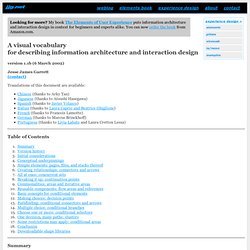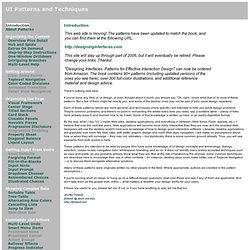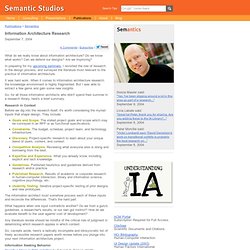

The Changing Face of University Websites. In a recent project for a local university, I looked at the pages of 25 universities, mostly from the US, UK, Australia – the countries that local students look to for higher education studies.

In this respect, the sample size being terribly small, I cannot say for certain that what I’ve learned is taking place universally. But the areas of change are so fundamental (and exciting) that I just had to write about it. University websites tend to be more complicated than corporate websites. Here are some reasons why: Now, let’s see some areas of focus of the redesigns and how different universities are doing them. This is the big change. Downloadable Shape Libraries. Looking for more?

My book The Elements of User Experience puts information architecture and interaction design in context for beginners and experts alike. You can now order the book from Amazon.com. version 1.1b (6 March 2002) Jesse James Garrett (contact) Translations of this document are available: Chinese (thanks to Arky Tan) Japanese (thanks to Atsushi Hasegawa) Spanish (thanks to Javier Velasco) Italian (thanks to Laura Caprio and Beatrice Ghiglione) French (thanks to Francois Lamotte) German (thanks to Marcus Brinckhoff) Portuguese (thanks to Livia Labate and Laura Cretton Lessa) STC - Topics in Usability - Card Sorts. Del.icio.us tags for Zimt. Jesse James Garrett: information architecture resources. The Information Architecture Institute. UI Patterns and Techniques: Introduction.
Introduction There's nothing new here.

If you've done any Web or UI design, or even thought about it much, you should say, "Oh, right, I know what that is" to most of these patterns. But a few of them might be new to you, and some of the familiar ones may not be part of your usual design repertoire. Each of these patterns (which are more general) and techniques (more specific) are intended to help you solve design problems. They're common problems, and there's no point in reinventing the wheel every time you need, say, a sortable table -- plenty of folks have already done it, and learned how to do it well.
By the way, when I say "UI," I mean Web sites, desktop applications, and everything in between (Web forms, Flash, applets, etc.). These patterns are intended to be read by people who have some knowledge of UI design concepts and terminology: dialogs, selection, combo boxes, navigation bars, whitespace, branding, and so on. If these are useful to you, please tell me. Usability Toolkit. Tools. The Web Credibility Project: Guidelines - Stanford University. Links about findability + the design of findable objects. Steve Krug and Lou Rosenfeld: Luminary Lectures @ Your Library.
Lou Rosenfeld is an independent information architecture consultant.

He has been instrumental in helping establish the field of information architecture, and in articulating the role and value of librarianship within the field. As a graduate student in library and information studies in the late 1980s, Lou became convinced that the skills of librarians were grossly undervalued — in the coming information explosion, who else would supply the skills of organizing, classifying and labeling information? As the Web sped that explosion along, Lou realized that additional skills and perspectives were required to develop coherent, intuitive structures — information architectures — that made web content accessible to users. Lou served as Argus' president from 1994-2001. Named a "Technology Pioneer" by Crain's Detroit Business, Lou served as lead information architect on projects for such clients as AT&T, Borders Books & Music, Chrysler Corporation, Dow Chemical, and SIGGRAPH.
Information Architecture & User Experience. LouisRosenfeld.com. Information Architecture Research. September 7, 2004 What do we really know about information architecture?

Do we know what works? Can we defend our designs? Are we improving? In preparing for my upcoming seminars, I revisited the role of research in the design process, and surveyed the literature most relevant to the practice of information architecture. It was hard work. So, for all those information architects who didn't spend their summer in a research library, here's a brief summary. Research in Context Before we dig into the research itself, it's worth considering the myriad inputs that shape design.
Goals and Scope.